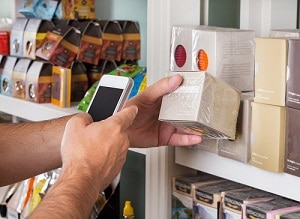 One of the most common questions our audiences ask is, “What keeps you going in the face of adversity, setbacks, and roadblocks?” They want to know what it takes to keep going – no matter what! Basically, they are looking for the ingredients of tenacity and the motivations behind sticking to it and not giving up. Most successful entrepreneurs will tell you that they had to face down seemingly insurmountable challenges, overcome huge obstacles, and even start over again …and again! What was it that kept their spirits up in the dark times? What was it that motivated them to stand up, dust off, and get going again every time they were knocked down?
One of the most common questions our audiences ask is, “What keeps you going in the face of adversity, setbacks, and roadblocks?” They want to know what it takes to keep going – no matter what! Basically, they are looking for the ingredients of tenacity and the motivations behind sticking to it and not giving up. Most successful entrepreneurs will tell you that they had to face down seemingly insurmountable challenges, overcome huge obstacles, and even start over again …and again! What was it that kept their spirits up in the dark times? What was it that motivated them to stand up, dust off, and get going again every time they were knocked down?
That’s the Spirit!
We think it boils down to one word: belief. Successful entrepreneurs believe in a positive outcome. They believe they will get the help, learn the lessons, and discover the solutions they need to solve their problems and move forward. This positive outlook is also known as intrinsic motivation. It’s intrinsic because the belief comes from within. This is really about an attitude of optimism. Some people refer to it as “spirit” as in, “That’s the spirit!” Or even, “the entrepreneurial spirit.”
We have written extensively about this “spirit” on our website and in our New York Times bestseller, The Barefoot Spirit, How Hardship, Hustle, and Heart Built America’s #1 Wine Brand. Recently we have embarked on a new project which we call “Business Audio Theater” where actors play the parts to use story as a form of audio experiential learning to dramatize this book. The stories convey real life examples of motivation. Our goal is to get listeners to identify with the thinking and internal processes that successful entrepreneurs rely on to keep going in the face of adversity. We call this the Barefoot Spirit.
The Keys Are in the Drawer
“What is intrinsic motivation?” you may ask. One of the stories we like to tell that illustrates intrinsic motivation and the power of belief we call, “The Keys are in the Drawer.” You’re running late. You dash out to your car. You can’t find your keys. You start to panic. You think to yourself, “I’ll probably have to look everywhere to find them. This is going to make me late for my meeting!” So, sure enough, you run back into the house., look in the drawer where the keys are usually kept, but you don’t see the keys. You panic even more. You check the pocket of your raincoat hanging in the hall. The keys are not there! You check the bedroom, the bathroom, the closet, and the kitchen. Still no keys! Now you’re really panicked. After you have looked everywhere, you start over with that drawer where you looked first. There they are! Right where they were supposed to be! Why didn’t you see them the first time you looked? Your eyes saw them, but your brain blocked the image because you told your brain that you’d “probably have to look everywhere to find them”.
This is an example of how a negative belief can affect your ability to perform. Imagine the power of a positive belief. Using this, you would have been more likely to let the image of the keys in the drawer get through to your brain and save you an awful lot of time and anxiety. If you believe there is a solution you will look for it. If you don’t believe it, you won’t look for it. And even if it’s right there in front of your nose, you won’t see it. Both types of belief are intrinsically motivated. The motivation for action, in this case, comes from within the individual. Whether it’s self-esteem, confidence, or achievement, intrinsically motivated action is based on belief.
They’re After You!
But there are other types of motivation, most commonly, external motivation, also known as extrinsic motivation. These external motivators can also have an influence on belief. Folks who use terms like, “That’s just my luck!” when things go south, are voicing a belief that they have “bad luck.” They got to that belief through external events that may have affected them negatively. After a period of time, the reoccurrence of those events may have established, and then reinforced a negative belief system. Some might argue that many of those negative events could have been avoided with a more positive belief system. But be that as it may, some individuals chose to interpret these events negatively. In a way, the extrinsic events caused or influenced the individual to intrinsically expect negative outcomes.
One form of positive extrinsic motivation that we particularly recommend for entrepreneurs who’ve hit the wall is to go back to their early adopters and ask them, “Tell me once again why you think my idea is so great.” These early adopters are external proof that your ideas have merits and your business will succeed. This type of outside reinforcement and validation can provide the kind of confidence you need to pick yourself up after a tumble and continue the march. We like to say that tenacity is the most important ingredient in entrepreneurial success. But validation is the fuel of tenacity. This is an example of extrinsic motivation.
Other extrinsic motivators include fear of bankruptcy or the promise of riches. Money is a great extrinsic motivator. Aside from the external validation we were getting during our very tenuous startup years, the fact is that we knew we had to keep going – because we were so far in debt. It was like a surfer on a wave of accounts payables. As long as we could stay up and out in front of the wave, we weren’t going to wipe out.
Many entrepreneurs are motivated by the fear of how they will look if they fail. Ironically, others are motivated by the satisfaction they will feel if they succeed, especially when they are told that they can’t do it, are attempting the impossible, or that the odds are stacked against them. Both of these motivators are based on external factors, which is how others will view them. The desire to say “I told you so” is a powerful motivating force for many entrepreneurs.
Whether it’s a physical reality, a psychological challenge, or financial survival, extrinsic motivators can play a giant part in any entrepreneur’s decision to take action and carry on. Extrinsic motivators have objective consequences which are constant reminders of the costs of failure and the rewards of success.
Doubling Down
Someone once said, “If you swim halfway across the English Channel, you’re not going to get tired and swim back!” Just going beyond the point of no return can be a motivation in itself. The physical extrinsic motivation of having completed over half of the swim now motivates you to complete the rest. The challenge itself, once partially achieved, affects the intrinsic motivation of the swimmer to continue. The achievement so far influences the swimmer to believe that she can complete the crossing.
Another example of intrinsic and extrinsic motivation happened to us when we got our first big break. After two years of trying to get traction in the marketplace with a CPG branded product, we were finally approved for distribution in a major chain store with over 200 outlets. That was extrinsic motivation, but it affected us in a very positive way. Psychologically we began to become intrinsically motivated by the external “proof” that we had a viable proposition.
We have always kept a goal book and at the beginning of every year, we’d write down our goals in different categories. Every time we achieved real, measurable progress in any category, we would post the achievement that was bringing us closer to our goal. Some weeks we didn’t have much to write. When that happened, we would go back and read the posts that we had already made about past progress toward that goal. These were external events but they affected us internally by building our confidence and our resolve. We could see that we were making progress and we were reminded of that progress at a time when we really needed it. These positive posts reinforced our belief in our ultimate success and improved our intrinsic motivation.
Just Imagine!
 It was common for us, with a national retail product, to drive long distances between cities to call on buyers and make presentations. So we would use the long drive time to listen to recordings from the great motivators of our time. We were hoping to pick up some techniques we could use in our next presentation. One of the speakers we particularly liked gave us an interesting and effective motivational tool which we use to this day.
It was common for us, with a national retail product, to drive long distances between cities to call on buyers and make presentations. So we would use the long drive time to listen to recordings from the great motivators of our time. We were hoping to pick up some techniques we could use in our next presentation. One of the speakers we particularly liked gave us an interesting and effective motivational tool which we use to this day.
We always suffered a lot of anxiety driving to these presentations never knowing how they were going to come out, or if we were making the long trip in vain. So it was ironic that one speaker suggested then when we saw the vehicles in the opposite lane returning from the city we were headed to, that we should imagine being in one of those vehicles, driving back from a very successful presentation. He suggested that we imagined how good we were going to feel knowing that it was a big success. As we would watch the opposing cars, we would see ourselves smiling, coming home, mission accomplished!
Now, we don’t want to get too woo-woo here, but it was amazing how much this exercise improves our confidence. We kept imagining ourselves driving back with a sense of satisfaction and excitement as we watched the unending line of cars. Guess what? Over 70% of the time that’s exactly what happened! We believe that because we conditioned ourselves for a positive outcome it affected the way we made the presentation, the confidence we conveyed to the buyer, the words we chose, our body language, and our timing. We were using external imaging to improve our internal confidence.
Time’s Up!
One of the great extrinsic motivators is time, or more precisely, limited time. When there’s a window of opportunity and you know it will only last for a short time, you are extrinsically motivated to seize that opportunity before it disappears. In the marketplace, opportunities are always presenting themselves, but as a brand builder, you must jump on them quickly. This means that you have to stay flexible and nimble. Having the ability to do this is a big advantage small companies have over the larger ones.
Once your company grows to become siloed with strict divisions of labor, and specialized personnel, isolated and insulated from sales, your people may feel discouraged by pop up opportunities. They know that the arduous processes and procedures necessary to take advantage of them will take longer than the window of opportunity allows. In this case, the big sluggish company stops looking for opportunities they can’t utilize in time. The short time period actually de-motivates them.
But on the other hand, the smaller, more agile, and faster-moving company is motivated by the relatively short window of opportunity. They will seemingly stop everything and jump to take advantage of the fleeting chance to gain a market advantage. This happened to us in our early days.
At an industry conference, we heard a large competitor had just dumped one of their statewide distributors. The distributor was not happy – to say the least. We had no distribution in that state at that time. We jumped on the opportunity. We physically went to that state and met with the distributorship. We told them that they could put our products in every store where they had previously placed our competitor’s products. They did it! And we had overnight distribution throughout that state. We hustled! We were motivated by the short and closing window of opportunity.
Tools You Can Use
One of the best motivational tools we have discovered is simply being prepared and knowing that you are prepared. Sea captains don’t know what to expect as they take their ships out to sea. But they mitigate their risks by having navigational tools on board that help them handle the unknown. Just like a captain would never venture out without a compass, GPS, sonar, radar, charts, weather reports, and a host of other tools, entrepreneurs can mitigate their risks with standards, best practices, and guiding principles.
Just knowing that you are prepared gives you a level of confidence that is in itself a motivator. You don’t know what’s ahead, but you are prepared. The best way to acquire these guiding principles is from other entrepreneurs who have already succeeded. Find out what they learned, so you don’t have to find out the hard way. Discover how they approached problems. Understand the standards that guided them through the storms. You will be motivated knowing that whatever the problem, you have a tool for that!
Conclusion
Intrinsic vs extrinsic motivators are equivalent to internal vs external factors that influence us to take action. There are many types of motivation, but they generally fall into these two categories. Belief, pride, and achievement can be intrinsically motivational. Time, money, health, and safety can be extrinsically motivational. Intrinsic motivation can be reinforced or discouraged by extrinsic factors. The key to success is to maintain a strong, positive outlook that sees extrinsic factors as achievable. To be successful in the marketplace you must be prepared and adopt the optimistic attitude that says, “I can do this!”



